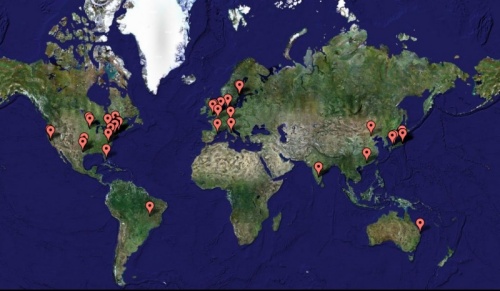The last few weeks have brought a quite intense immersion in second life. What started with just checking what the tools were like has ended up being a quite a movement.
Quite a few of us have found that the linden labs platform with a mixture of 3d model creation tools and a very rich scripted language is letting us explore many of the ideas that may have been held up or on the backburner. It would appear that the open nature of second life, the ability to protect intellectual capital, to build and expand on other team members work is causing many more innovative ideas to surface.
Some of these will start to appear here on eightbar.
Due to our immersion in second life we were invited to attend an opening event at a campus island created by NMC. This was an interesting event in that many of the people were very new for Second life, but you could tell the more experienced dwellers by the costumes and looks. The community aspect that we all helped one another along and shared ideas was very liberating. The nearest analogy is a wiki, but in 3d and with all the contributors being there and seeing one another.

I also have ended up putting some skin in the game by buying a private island (server) for us to share some of our ideas and the mere fact this existed has encouraged our own community to form around it.
Whilst it was very empty.

We soon had a board room.

But all work and no play makes jack a dull boy so we have all been out in the metaverse experiencing the richness of the user created world, such as live concerts.

Its certainly brought a great team together who have a common interest, and are finding ways to express all sorts of creative and technical ability.



